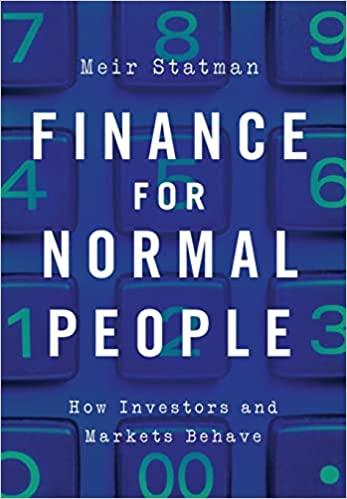Question
1. An investment has the following cash flows. The required rate of return for this investment is 14%. Should you make your decision based solely
1. An investment has the following cash flows. The required rate of return for this investment is 14%. Should you make your decision based solely on the internal rate of return rule? Why or why not?
| Year | Cash Flow |
| 0 | -$60 |
| 1 | $155 |
| 2 | -$100 |
Question 1 options:
|
| You cannot apply the IRR rule in this case because there are multiple IRRs. |
|
| Yes; because the IRR is a positive rate of return |
|
| No; because the IRR is less than the required return |
|
| Yes; because the IRR exceeds the required return |
|
| No; because the IRR is a negative rate of return |
2. Book, Inc. is considering a project that is expected to produce the following cash flows over the next five years: $22,500, $28,200, $41,800, $33,000, and $15,000 respectively. Book, Inc. has $98,000 available, which is the amount needed to initiate the project. Should Book, Inc. accept this project if the required rate of return is 11%? Why or why not?
Question 2 options:
|
| Yes; Book, Inc. will make $6,362 in today's dollars if they accept the project. |
|
| No; The PI is 1.04, which is considered a reject signal. |
|
| No; The IRR is 12.47%, which is greater than the required return. |
|
| Yes; The PI is 0.96, which is considered an acceptance signal. |
|
| No; Book, Inc. would lose $2,407 in today's dollars if they accept the project. |
Step by Step Solution
There are 3 Steps involved in it
Step: 1

Get Instant Access to Expert-Tailored Solutions
See step-by-step solutions with expert insights and AI powered tools for academic success
Step: 2

Step: 3

Ace Your Homework with AI
Get the answers you need in no time with our AI-driven, step-by-step assistance
Get Started


